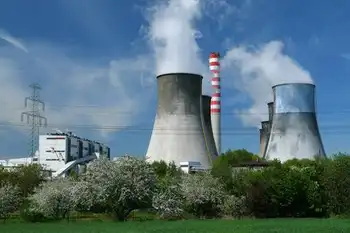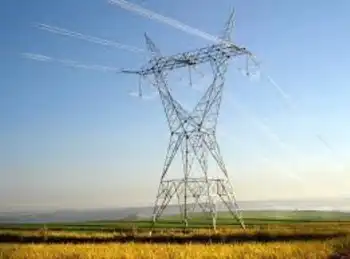Duke CEO has many shades of green
By New York Times
NFPA 70e Training
Our customized live online or in‑person group training can be delivered to your staff at your location.

- Live Online
- 6 hours Instructor-led
- Group Training Available
But he has none of the macho, cowboy stolidity you might expect in an energy CEO Instead, he lives to brainstorm.
He spends more than half his time on the road, a perennial fixture at wonky gatherings like the Davos World Economic Forum and the Clinton Global Initiative, corralling “clean energy” thinkers and listening eagerly to their ideas. The day we met, he was brimming with enthusiasm for a new approach to solar power.
Solar is currently too expensive to make economic sense, according to Rogers, because the cost to put panels on a roof is greater than what a household would save on electricity.
But what if Duke bought panels en masse, driving the price down, and installed them itself — free?
“So we have 500,000 solar units on the roofs of our customers,” he said. “We install them, we maintain them and we dispatch them, just like it was a power plant!”
He did some quick math: he could get maybe 1,000 megawatts out of that system, enough to permanently shutter one of the companyÂ’s older power plants. He shot me a toothy grin.
Even in this era of green evangelism, Rogers is a genuine anomaly. As the head of Duke Energy, with its dozens of coal-burning electric plants scattered around the Midwest and the Carolinas, he represents one of the countryÂ’s biggest sources of greenhouse gases.
The company pumps 100 million tons of carbon dioxide into the atmosphere each year, making it the third-largest corporate emitter in the United States.
Yet Rogers, who makes $10 million a year, is also one of the electricity industryÂ’s most vocal environmentalists. For years, he has opened his doors to the kinds of green activists who would give palpitations to most energy CEOÂ’s. In March, he had breakfast with James Lovelock, the originator of the Gaia theory, which regards the earth as a single, living organism, to discuss whether species can adapt to a warmer earth.
In April, James Hansen, a climatologist at NASA and one of the first scientists to publicly warn about global warming, wrote an open letter urging Rogers to stop burning coal — so Rogers took him out for a three-hour dinner in Manhattan. “I would dare say that no one in the industry would talk to Lovelock and Hansen,” Rogers told me.
Last year, Rogers astonished his board when he presented his plan to “decarbonize” Duke Energy by 2050 — in effect, to retool the utility so that it emits very little carbon dioxide.
Perhaps most controversial, though, Rogers has long advocated stiff regulation of greenhouses gases.
For the last few years, he has relentlessly lobbied Washington to create a “carbon cap” law that strictly limits the amount of carbon dioxide produced in the United States, one that would impose enormous costs on any company that releases more carbon than its assigned limit. That law is now on its way to becoming reality: last fall, Senators Joe Lieberman and John Warner introduced a historic “cap-and-trade” bill that would require the country to reduce its co2 emissions by 70 percent before 2050.
Earlier this month, the bill failed to advance, but its sponsors will most likely reintroduce it next year once a new president is in office; meanwhile, a half-dozen other rival bills are currently being drawn up that all seek the same thing. One way or another, a carbon cap is coming.
Prominent environmentalists, thrilled, credit Rogers for clearing the way politically; many are his friends.
“It’s fair to say that we wouldn’t be where we are in Congress if it weren’t for him,” says Eileen Claussen, head of the Pew Center on Global Climate Change. “He helped put carbon legislation on the map.”
This should be a golden moment for Rogers: he has godfathered a bill that could significantly reshape the electricity industry, help balance the world’s climate and establish his legacy as a visionary CEO — a “statesman,” as he puts it. Instead, he is very, very worried, fearful that the real-world version of his dream legislation may end up threatening the company he has spent so many years building.
Though the details are devilish, the basic cap-and-trade concept is simple. The government makes it expensive for companies to emit carbon dioxide, and then market forces work their magic: those companies aggressively seek ways to avoid producing the stuff, to try to get a competitive edge on one another.
This is precisely how the government dealt with acid rain, back in the late ’80s. Acid rain, like global warming to a great extent, was caused by dangerous byproducts from burning coal: the chemicals sulphur dioxide and nitrogen oxide, or “sox and nox,” as they were known colloquially.
Environmentalists in the Â’80s tried to get Ronald ReaganÂ’s Environmental Protection Agency to crack down on sox and nox, but an antiregulatory mood prevailed. So a group of politicians and forward-thinking environmentalists turned to the marketplace instead.
Through legislation, the government first set a limit, or cap, on how much sox and nox could be discharged by the nationÂ’s coal-burning utilities. These companies then regularly received allowances based on their historic levels of emissions. At the end of a predetermined period, every company had to possess enough in the way of allowances to cover the gases it released or face stiff penalties. Over time, the cap and the number of allowances were slowly reduced.
A system like this creates a carrot and a stick.
An electrical utility that reduces its pollution below the cap has leftover allowances to sell to other companies. In theory, a virtuous cycle emerges: a company that invests money to clean up its emissions can more than recoup its outlay by selling unused allowances to its dirtier, laggard competitors. Furthermore, entrepreneurs have an incentive to develop cleanup technologies.
And sure enough, following the Clean Air Act amendments in 1990, innovations emerged quickly, ranging from new coal blends to chemical “scrubbers” that removed sox and nox from the smokestacks.
Government and industry officials predicted that solving the problem of acid rain could cost $4 billion in new investment — but the marketplace was so efficient that only an estimated $1 billion was needed.
A cap-and-trade program for co2 would try to harness the same dynamics.
There are several bills under development — Lieberman-Warner is the most advanced, and the one most likely to pass next year — but they all take roughly the same approach.
Greenhouse-gas emissions are capped in key carbon-dioxide-producing industries like gas, oil and electricity. Allowances are issued and companies are free to sell them to one another. Then the cap and number of allowances are ratcheted down over time, sparking, itÂ’s hoped, the same Cambrian-like explosion in the development of cheaper, cleaner technologies.
If Rogers is keen on the idea of cap and trade, it’s because the acid-rain fight was one of his formative experiences as a CEO. His first job was a three-year stint as a journalist in Lexington, Ky. — “I was a journalist, so I’m allowed to be a little cynical at times,” he likes to joke — before heading to law school and working as a public advocate in his home state of Kentucky.
In 1988, by then 40 years old, he switched sides — the Indiana electrical utility PSI Energy teetered on the verge of bankruptcy, and Rogers was offered the job of turning it around.
Part of what ruined PSI was a $2.7-billion write-off of its nuclear plant when local environmentalists forced PSI to halt its construction after the Three Mile Island accident. Rather than demonize the environmentalists, Rogers instead decided to “put on a flannel shirt” and meet with them in a cafe in Madison, Ind.
Phil Sharp, a U.S. representative for Indiana at the time, recalls the activists’ astonishment. “They couldn’t believe it,” he says. “They were always used to taking on the big utility companies. Then he came in and instead of saying, ‘What craziness is this?’, he said, ‘O.K., let’s talk.’”
It was partly self-protection, of course; Rogers knew that public opinion could ruin a company. Aware that the environmentalists were also worried about acid rain, Rogers decided it was a problem he should head off.
When cap and trade was proposed as a solution to acid rain, most energy executives whose companies burned coal hated the idea and lobbied fiercely against it. It wasnÂ’t merely that they tended to resist regulation. They also didnÂ’t believe it would work: they didnÂ’t trust that the necessary technology would evolve fast enough. If it didnÂ’t, they worried, very few firms would have extra allowances to sell, and the price of those on the open market would skyrocket. Companies might go broke trying to buy extra allowances to meet their cap.
Rogers was the outlier. He loved the elegance of the market-based approach, and he had a nerdÂ’s optimism that the technology would bloom quickly.
“And we were right,” he says. “So that’s what gave me the faith that this approach works. All you have to do is set the market up right.” PSI spent only $250 million to clean up its smokestacks, and allowances were “cheap and plentiful,” Rogers says.
Even as acid rain was being confronted in 1990, climate change was entering the public debate. By this time, Rogers was friends with a number of environmentalists and decided to dive into the science of global warming.
He began inviting climate experts from Harvard, NASA and various research firms to brief him. “Pretty soon, I could see that the science was persuasive,” Rogers recalls. Many policy makers behind the acid-rain cleanup suspected that a cap-and-trade program could whip the carbon problem too. Rogers agreed.
“What’s unusual about Jim is that he recognized these problems not as a woe-is-me burden but as real growth opportunities, opportunities to change his industry,” says Tim Wirth, president of the United Nations Foundation and a former senator from Colorado who helped write the acid-rain legislation. “That allows him to be cheerful in the face of the opposition.”
And there was plenty of opposition.
Back then, merely acknowledging the existence of global warming was a thought crime among coal-burning energy executives. But as early as 2001, Rogers told a meeting of fellow CEOÂ’s in the industry that they should all work to pass a federal carbon cap.
“They were stunned,” recalls Ralph Cavanagh, an energy program director at the Natural Resources Defense Council, who was present at the meeting. “That was the first time I had heard a major energy executive say anything like this. But because he was chairman of their energy committee, he wasn’t just a flaky maverick.”
Sharp, a longtime friend, chuckles when he remembers how much ire Rogers generated.
“They hated him,” he says. “Nobody would invite him for golf.”
Rogers’s environmentalism has a weird flavor to it. Most people involved in the cap-and-trade process talk about their polar-bear moment — the instant when they realized the earth is imperiled. (John Warner, the Republican co-sponsor of the Lieberman-Warner bill, told me his inspiration came when he visited a forest he worked in as a teenager and found it decimated by a change in weather patterns.)
In eight months of meeting with Rogers, listening to his speeches and watching him in action, I kept waiting to hear about his polar-bear moment, but it never came. RogersÂ’ environmentalism is practical, enthusiastic and intrigued by clean-tech innovations, not given to heartstring-tugging rhetoric about vanishing species or redwood trees.
Rogers does, however, talk frequently about “the grandchildren test.”
“I want them to be able to look back and say, ‘My granddaddy made a good decision, and it’s still a good decision,’ ” he says. Though he’s only 60, Rogers already has seven grandchildren, and he frequently takes them on trips around the world.
He told me, when we met for dinner in Charlotte, N.C., how he asked his 10-year-old granddaughter Emma what she wanted to do when she grew up; she said she wanted to “protect endangered species.” He found it striking that such a young child would already have a sense of the precariousness of nature. “She’s an old soul, let me tell you,” he says.
When asked why Rogers ended up taking such a contrary approach to his job, friends point to the fact that he never trained as an engineer — the background of most energy executives. He isn’t as insular, Sharp points out, so he’s interested in what critics have to say.
“Usually what people do is circle the wagons,” Sharp says, “but he listens.”
It is also true that RogersÂ’s green focus has a purely strategic element.
Anyone who was paying attention to public opinion on climate change could see that the government would, sooner or later, have to limit carbon emissions. So why not plan for that — start thinking about how your company would respond, start making friends in Washington?
Rogers sunnily agrees that this was a large motivation for his environmental work. “I wanted to get out ahead of it,” Rogers told me the very first time I met him last August, in Washington, which he was visiting nearly weekly to brief and cajole senators.
“It’s the old saw — ‘If you’re not at the table, you’re going to be on the menu,’” he says.
Last June, Rogers delivered a speech to the Senate environment committee, led by Barbara Boxer, which was beginning to assess the Lieberman-Warner bill. “I want the Senator Boxers, Senator Lieberman or Warner — I want them to feel confident that they can turn to me as an energy expert and trust me,” he said then.
To get a sense of the awesome challenge posed by “decarbonizing” electricity, go to one of Duke’s largest coal-fired plants, near Charlotte.
When I visited last summer, I first wandered into the building that houses the furnace, a long tubular mass of steel with surprisingly graceful, almost art-deco lines. Then I climbed a flight of metal stairs to the rooftop, ascending through 120-degree air that left my shirt damp with sweat.
Off to one side were the “scrubbers” — enormous metal contraptions that capture some of the acid-rain components by pumping the coal fumes through great waterfalls of limestone slurry. The process produces gypsum, a safe and inert mineral, which Duke sells for use in drywall. Looking down from the roof, I saw huge piles of limestone that dwarfed the trucks scurrying around them.
Then it hit me: of the half-dozen structures in the coal plant, the majority are devoted not to producing energy but to cleaning it up. Or put another way, burning coal is trivially easy; itÂ’s cleaning up the emissions that requires all sorts of work and machinery.
“Sometimes I tell people that Duke is really just a company that processes chemicals to produce clean air, and we get electricity as a byproduct,” Rogers said with a laugh when we met in his office afterward.
If itÂ’s this difficult to strip out acid-rain chemicals, I can hardly imagine what prodigious feats of engineering will be necessary to remove co2 from electricity production.
Rogers, however, maintains that it is possible to cut DukeÂ’s co2 emissions to half of todayÂ’s levels by 2030. That would put the company in line with the goals set by the Lieberman-Warner bill or any of the other cap-and-trade alternatives, which mostly call for a 70 percent reduction in emissions by 2050. Rogers put a pad on his desk and began sketching a pie chart to show me how heÂ’ll do it.
Currently, nearly all of Duke’s emissions come from its coal-fired plants. But those plants are aging; by 2050, every one of them will have to be replaced. If the company is going to replace them anyway, Duke might as well phase in “clean” sources.
It isnÂ’t quite that simple, of course.
No low-carbon sources are currently big or cheap enough — and it’s not clear when they will be. For example, Rogers calculates that Duke needs two new 2,200-megawatt nuclear plants. (One of them is currently under development in South Carolina.)
But these plants are hellishly difficult to construct. They’re so expensive — many billions apiece — that historically they have required government guarantees, because Wall Street is loath to invest so much in such politically fraught projects.
Rogers suspects that public opinion will shift in favor of nuclear energy eventually, because it offers huge amounts of reliable power with no direct co2 emissions.
What about renewable energy, like wind and solar? Rogers says that by 2030 they could make up as much as 12 percent of DukeÂ’s energy supply, but they wonÂ’t be a big factor for another decade, because sunshine and wind are too irregular and the plants to harvest them are still too small.
This year, Duke signed a 20-year deal to buy the entire electric output of the largest solar farm in the country, SunEdison’s plant in Davidson County, N.C. — it generates all of 16 megawatts, compared with 800 megawatts from a coal plant.
He drew another wedge in the pie chart for coal: it will shrink from producing nearly two-thirds of DukeÂ’s power to just over a quarter. Rogers predicts coal will never go away, because itÂ’s cheap and more accessible than any other energy source.
The technology to remove co2 from the smokestacks and “sequester” it affordably is, he estimates, 10 to 15 years away.
Duke is planning to build an experimental plant in Edwardsport, Ind., that will “gasify” coal, a tentative first step to capturing carbon. But Duke embarked on this venture only after securing a government subsidy of $460 million. Even if someone manages to make carbon sequestration feasible, Rogers worries that there’s a limit to what the public will tolerate.
“We don’t know what happens if the carbon leaks back out of the ground, and we’ve never done it successfully on scale,” he told me. Later, he said, “So you’ll get the next version of Not in My Backyard — it’ll be Not Under My Backyard.”
When Rogers finished, his pie chart was neatly divided into the various fuel options. This plurality is a key part of his vision: no single energy source will save us. None is so plentiful or without costs that it dominates the others. “There’s no silver bullet,” he concluded, “just silver buckshot.”
Interestingly, the one green initiative Rogers says he hopes will emerge most quickly is focused not on generating power but on conserving it. Last year, he concocted the Save-a-Watt plan, which would let Duke profit from helping its customers drastically cut their energy use.
Like roughly half the utilities in the United States, Duke is regulated; it can charge more for power only if it builds a new power plant and persuades the regulator to approve a rate increase to pay for it. But the fastest way to reduce a carbon footprint is by improving efficiency.
Under Save-a-Watt, Duke would, for example, distribute “smart” meters that automatically turn off customers’ appliances during periods of peak power use. For its first experiment, Duke plans to cut the consumption of its customers in the Carolinas by 1,800 megawatts, which is equal to the output of two new coal-fired plants. The regulator would then let Duke charge higher rates for the electricity its customers do use to pay for all the efficiency technology.
Save-a-Watt thus turns the power business on its head: rather than charge customers more to build plants, Duke will effectively charge them not to do so.
“I would rather spend $8 billion implementing efficiency than spend $8 billion on building a nuclear plant,” Rogers told me. Nuclear power has enormous construction and political risks. Efficiency doesn’t.
After Rogers spoke with Bill Clinton at a private retreat last year, the former president was so fired up that when he later went onstage at the annual Clinton Global Initiative conference he raved about Save-a-Watt, declaring it “a simple, brilliant idea. It has the capacity to fundamentally change what we do in the United States.” As the Lieberman-Warner bill took shape last spring and summer, Rogers ought to have been feeling triumphant. Instead, he was increasingly uneasy with what the senators were doing. He was particularly alarmed by the way they planned to hand out co2 allowances.
Among the many mind-numbing details in cap-and-trade politics, the allowances — permission to pollute, essentially — are the most charged. In the acid-rain trading market, the government freely gave the worst polluters the largest allowances, under the assumption that they faced the biggest challenges and needed the most financial help. But the Lieberman-Warner bill, like virtually every other cap-and-trade bill in the works, gives away only 75 percent of the allowances; the government auctions off the rest.
Year by year, the percentage of allowances that will be auctioned off steadily rises, until nearly all of them are. In essence, with the stroke of a pen, the government creates a new and valuable form of property: carbon allowances.
And for the government, we are talking about staggering amounts of money, the biggest new source of cash in years.
Carbon allowances are projected to be worth $100 billion in the first year alone, rising to nearly $500 billion by 2050. To put that in context, an estimate prepared by the Congressional Budget Office predicts that the annual revenues from auctioning allowances will be equal to 15 percent of what the I.R.S. takes in.
Rogers sees this as a financial disaster for Duke.
By his calculations, Duke would spend at least $2 billion in the first year alone and have to raise its rates immediately by up to 40 percent to cover that. Worse, coal-fired utilities would not get the special treatment they did under the acid-rain legislation.
This time around, a large number of allowances would be given away to nuclear and hydroelectric utilities that already produce very little carbon dioxide. Those companies would not need their allowances and so could sell them for a healthy profit in coal-dependent states.
The Lieberman-Warner rules, Rogers says, will effectively impose a “hidden tax” on those states — and they’re primarily the heartland states, where energy costs are already pinching industry and working-class families.
What especially enrages him, though, is how the government wants to spend the cash it raises from the allowances. As Lieberman-Warner worked its way through the Senate environment committee, senators attached assorted riders: $800 billion over the life of the bill for tax refunds to help consumers pay for their higher electric bills, $1 billion for deficit reduction and billions more in handouts to state governments.
In industry speeches, Rogers characterized the bill as a “bastardization” of cap-and-trade economics. (He later apologized.) In conversations with me, he expressed special disdain for Barbara Boxer, the California senator who shepherded the bill through the Senate environment committee.
“Politicians have visions of sugarplums dancing in their head with all the money they can get from auctions,” Rogers told me last month. “It’s all about treating me as the tax collector and the government as the good guy. I’m the evil corporation that’s passing through the carbon tax so Senator Boxer can be the Santa Claus!”
If the government was going to collect cash from carbon auctions, Rogers figured, at least it ought to invest that money in green-tech research.
“A billion dollars for deficit reduction,” he vented. “A billion dollars! What is (Boxer) smoking? I thought we were solving carbon here.”
For all of Rogers’s careful effort to position himself as a forward thinker — and an advocate for the Midwestern coal states — that did not gain him any slack. Congressional insiders who watched Rogers lobby the Senate committee say that regional politics actually worked against him.
The Democratic deal-makers who promised to deliver the votes for the bill were “a left-center coalition” of senators, most of whom come from urban and coastal states that do not rely heavily on coal. (Boxer, for example, hails from California, which gets only a small percentage of its energy from coal.)
“And a lot of people, Jim Rogers in particular, really didn’t play in the negotiations,” says a Congressional aide close to the Lieberman-Warner negotiations who did not have approval to talk to the press. “The members on the Democratic side aren’t particularly responsive to his concerns.”
So by this spring, Rogers found himself in the curious position of fighting tooth-and-nail against a bill he spent years pushing for. It is entirely possible that Rogers is right, and that the auctioning of allowances will lead to economic shocks.
Many economists worry about the price of allowances rising out of control.
“Clean” technology might not emerge fast enough. Nuclear power could flounder. Desperate to move away from coal, utilities might switch to burning natural gas, driving up its price and thereby substantially inflating the cost of heating American homes.
As Rogers went on the attack, critics countered that he sounded less like an environmental statesman and more like an old-school C.E.O. fighting for government pork, arguing baldly that what’s best for Duke is what’s best for the country — that cap-and-trade will only work if it’s set up in a way that best benefits Duke.
John Rowe, the chief executive of Exelon — the country’s largest nuclear power company, which will profit handsomely by selling its allowances — argues that it’s only fair to hit Duke and others with higher costs.
Customers in nuclear states have paid higher electric bills for years, because nuclear power is inherently more expensive to generate, Rowe points out. Duke could have switched to nuclear decades ago but didnÂ’t, so now it must pay the price.
“Duke’s customers had a big cost advantage for a very long time,” Rowe told me. “And our feeling is you’re not entitled to have that made virtually permanent.” And he added, “This is sausage making, but Lieberman-Warner makes a pretty good sausage.”
The truth, perhaps inevitably, is that as carbon-cap laws become closer to reality, almost no one is happy. Coal-burning energy firms fear theyÂ’ll be destroyed. Environmentalists worry that the energy lobby will gut the bills.
This conflict was laid bare at DukeÂ’s annual shareholdersÂ’ meeting in early May. Rogers started things off by devoting a full hour to his 40-year plan to decarbonize Duke. But when it was time for the question period, a dozen environmentalists lined up at the microphones and took up another hour lambasting Rogers for his new coal plant, now being built in Cliffside, N.C.
If Rogers was really committed to breaking away from co2 emissions, why wasnÂ’t he pouring the money into renewables?
“Business as usual for even another decade will be disastrous,” said Jim Warren, executive director of the North Carolina Waste Awareness and Reduction Network. A 25-year-old shareholder pleaded with Rogers to stop buying coal from mountaintop mines and foreswear nuclear energy.
“What you invest in today, my generation has to pay for in the future,” she said. “Please do not steal from your grandchildren and leave us with a mess to deal with.”
But most of the shareholders, who numbered 250 or so, rolled their eyes as the environmentalists spoke; some openly heckled.
“I would just like to caution our company not to get on this global-warming bandwagon,” one shareholder stood up to say. “I’ve read a lot of scientists, and there’s no agreement.”
Rogers remained unwaveringly polite to the opposition, though — at several points shushing the hecklers, and thanking each speaker who laid into him.
When I saw Rogers a few days after the event, he grimaced at the memory of it.
He is annoyed by opposition to his new coal plant; he also seems genuinely puzzled that local environmentalists donÂ’t see the big picture as he does, that they donÂ’t trust his 40-year plan to slash DukeÂ’s carbon output. He maintains that the new plant will partly replace two older coal-fired ones, and because it is much more efficient, it will produce 30 percent less co2.
“Our overall carbon footprint is going to go down,” he insisted. His frustration is the flip side of his desire to talk endlessly to critics of coal; he says he believes he can persuade anyone, which is probably why he seems so alarmed when he fails.
Yet many local environmentalists no longer believe Rogers, and they have precisely the opposite view of how the future should unfold. They view the Lieberman-Warner bill not as too strong but as too weak. They point out, correctly, that Duke stands to reap tens of billions in free allowances, even under the existing bill, money that will subsidize the burning of coal.
“This bill gives huge windfall profits to a company that buys a lot of coal, like Duke,” says Frank O’Donnell, the head of Clean Air Watch, an environmental group. “I happen to think that it’s immoral. In a sense, you’re paying the polluter. You’re rewarding the very companies that are the source of the problem.”
He says he doesn’t believe that coal-dependent companies will move fast enough unless they feel the tighter pressure of even more aggressive carbon caps. Rogers is simply “greenwashing” his company, saying all the right things so he can wear the mantle of the revolutionary without having to make the hard sacrifices.
Allegations like these perturb Rogers no end.
Many protesters, he told me, are an “eco elite” who don’t understand the need working-class people have for affordable energy. But then, in another breath, he admits he also understands why they view him askance.
“There’s an interesting contradiction in my position,” he said. “I’ve struggled with it. On the one hand, I want to smooth out the transition for the customers, because we’ve got low prices. But on the other hand, and this is sort of the awkwardness of it, the other truth is as prices go up, people’s behavior is modified.”
Change needs to come, but how fast?














